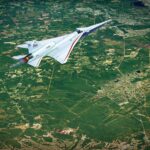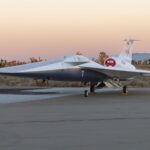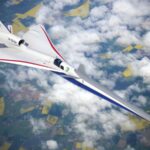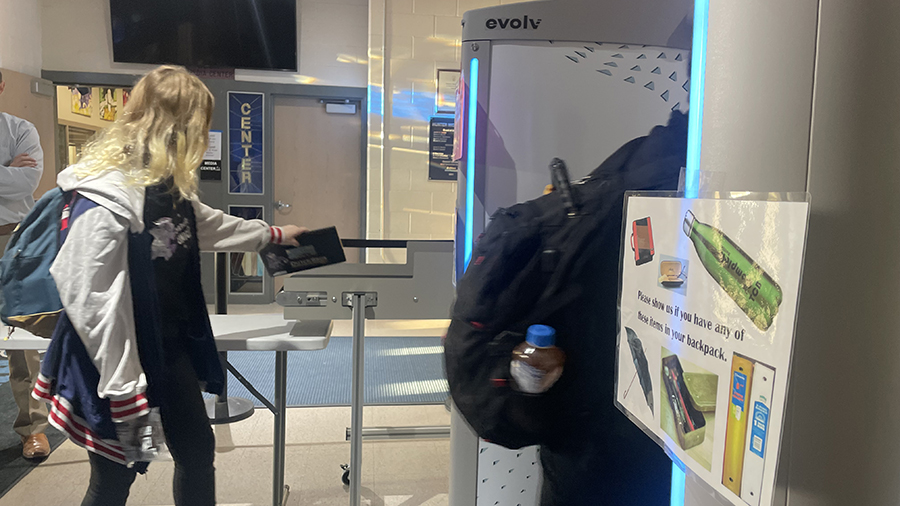X-59: NASA’s ‘quiet’ supersonic plane revealed
Jan 15, 2024, 12:23 PM
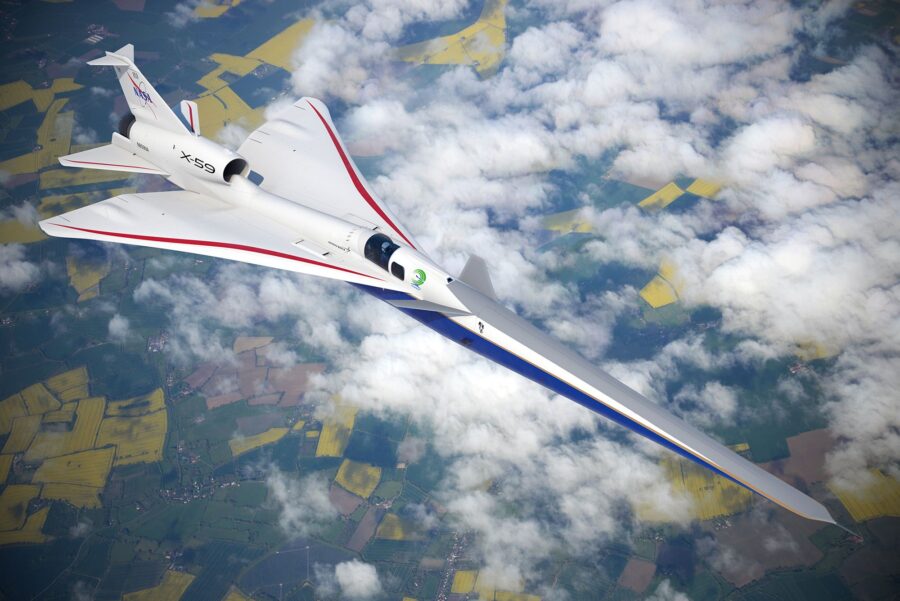
The plan is for the X-59 will take off for the first time this year. (Senior Airman Christine Gorening, NASA)
(Senior Airman Christine Gorening, NASA)
(CNN) — If you’ve heard a sonic boom recently, you probably remember it. The loud, explosion-like bang – caused by a plane flying faster than the speed of sound – can be startling, and even crack windows.
Sonic booms are part of the reason why there are no supersonic passenger planes flying today, and one of the limiting factors to the success of Concorde, which last flew in 2003. The supersonic airliner was restricted to subsonic speeds when flying over land or near coastlines, and current international regulations still limit the speed of commercial transport over land to below Mach 1, or the speed of sound, to avoid the disturbance of sonic booms over inhabited areas.
Now, NASA is working to change those regulations by transforming the boom into a “thump,” paving the way for a new generation of quieter supersonic aircraft. The agency is doing so through a program called Quesst, which is the result of decades of research and is centered around a new aircraft called the X-59, which debuted Friday.
Distant thunder
The X-59 is the latest in a series of experimental planes which include the X-1, which in 1947 became the first manned aircraft to exceed the speed of sound, and the X-15, which still holds the record for the fastest ever manned flight, set in 1967 at Mach 6.7.
The new craft was designed and built by prime contractor Lockheed Martin Skunk Works in Palmdale, California, under a $247.5 million NASA contract. With factory rollout now complete, the X-59 will now undergo integrated systems testing, engine runs, and taxi testing in preparation for first flight. It’s set to take off for the first time later this year, ahead of its first quiet supersonic flight.
“In just a few short years we’ve gone from an ambitious concept to reality. NASA’s X-59 will help change the way we travel, bringing us closer together in much less time,” said NASA deputy administrator Pam Melroy in a statement.
“It will be significantly quieter than Concorde or any other supersonic aircraft that exist today,” Craig Nickol, senior adviser at NASA Headquarters, told CNN in 2022. “It’s extremely long and thin: It’s almost 100 feet long (30.5 meters), but has a wingspan of only about 29 feet. The nose is a distinguishing feature on this aircraft: it’s about a third of the length.”
The sleek shape plays a key role in making the aircraft much quieter when traveling supersonically.
But how does a sonic boom happen? When an aircraft travels at subsonic speeds, the sound waves that it normally creates can travel in all directions; at supersonic speeds, however, the aircraft will leave its own sound behind and the sound waves will compress and coalesce into a single shockwave that originates at the nose and ends at the tail.
When this highly compressed shockwave meets a human ear, it produces a loud boom, which does not occur when the plane breaks the sound barrier, but is rather a continuous effect that can be heard by anyone in a cone-shaped area beneath the plane, as long as it exceeds the speed of sound.
The X-59’s shape is designed to prevent the shockwaves from coalescing together. Instead, they spread out, with the help of strategically placed aerodynamic surfaces. The lone engine is also at the top rather than the bottom of the plane, to keep a smooth lower profile that prevents shockwaves from reaching the ground.
As a result, NASA believes the X-59 will produce just 75 decibels of sound when traveling at supersonic speeds, compared to Concorde’s 105 decibels.
“What that means is that this aircraft may sound like distant thunder on the horizon, or like someone shutting a car door around the corner,” Nickol says. “It may even be that people don’t hear the boom at all, and if they do they will certainly not be startled, because it will be low and spread out, and not that loud at all.”
Changing regulations
The expectation is that the X-59 will fly at 1.4 times the speed of sound, or 925 mph. Before that, the Quesst team will carry out several flight tests at Lockheed Martin Skunk Works before transferring the aircraft to NASA’s Armstrong Flight Research Center in Edwards, California, which will serve as its base of operations.
The crucial part of the program will start later in 2024, when a series of test flights will be performed over half a dozen residential communities across the US, selected to offer a diverse mix of geographic and atmospheric conditions: “That’s going to be a fun part of the project, because we’re going to engage with the public and generate a little bit of citizen science,” Nickol said.
The plan is reminiscent of an experiment run by the Federal Aviation Administration (FAA) in 1964, when supersonic fighter jets were repeatedly flown over Oklahoma City to test the impact of sonic booms on the public.
It didn’t go well, with up to 20% of people objecting to the booms and 4% filing complaints and damage claims. “We don’t want to repeat that, of course, that’s why we’re going to test this aircraft on a restricted range first, measuring all the booms,” says Nickol. “Only when we’re satisfied with the performance we’ll go out to the communities, and still carefully control the level of the sonic booms.”
Once the X-59 is flown over the selected areas, NASA will engage with the communities on the ground to gauge their response to the noise. The goal is to confirm the theory that a 75-decibel boom will be acceptable.
The data gathered in this way will then be presented to the US Federal Aviation Administration and international regulators.
A new generation
NASA believes that a change in regulations would open up the skies for a new generation of supersonic aircraft, allowed to fly over routes that aren’t permitted now, such as New York to Los Angeles, and cutting flight time roughly in half.
We don’t know, however, what those aircraft will look like and who will build them, because the X-59 is not a prototype but merely a technology demonstrator.
“Any future design of a low boom commercial aircraft for supersonic flight will certainly be different than this, although some of the design elements could translate directly over,” said Nickol, pointing at the extended nose, some of the flight control systems, and the X-59’s unique eXternal Vision System, which provides the pilot with high-definition displays showing what’s ahead, in the absence of an actual forward-facing window due to the aircraft’s streamlined nose.
Several companies are currently developing supersonic passenger aircraft and plan to fly them within a decade or less, including Hermeus, Boom and Spike. However, it’s doubtful that any of them will be able to take advantage of the findings of the Quesst program, which will likely inform the next generation of supersonic aircraft.
Nickol believes that such aircraft, with the ability to fly anywhere, would democratize supersonic travel, marking a stark difference with Concorde’s luxury status: “If you look back 100 years, a lot of the advanced mobility technologies, including railroads and airplanes, started out as premium experiences, but as technology advanced and costs came down, they became available to the general public,” he said.
“One of the long-term goals is to make this form of high-speed travel available as a widespread application, and there’s really no reason why it can’t happen.”


